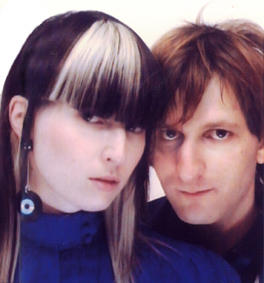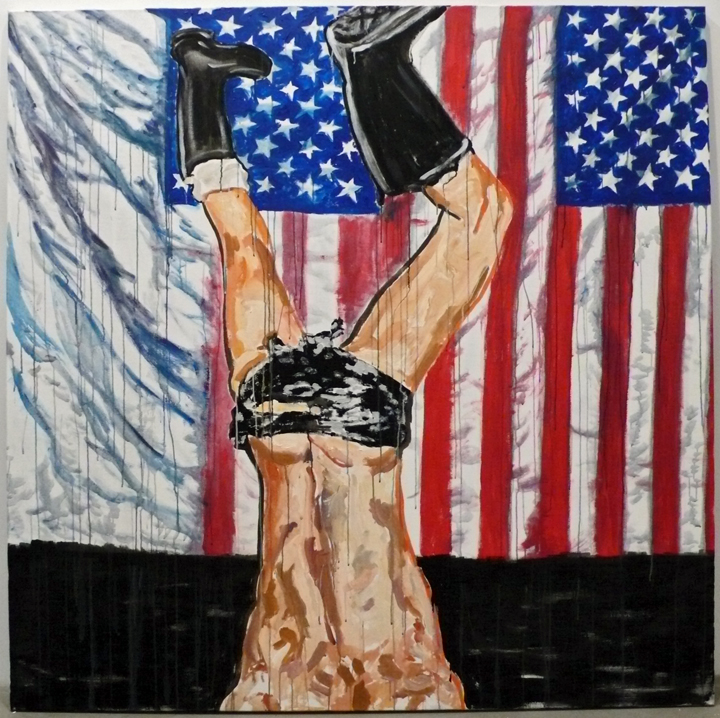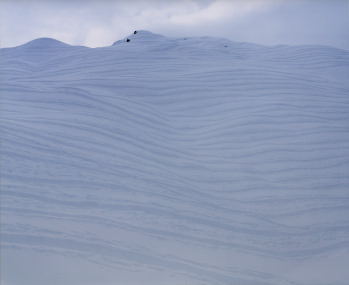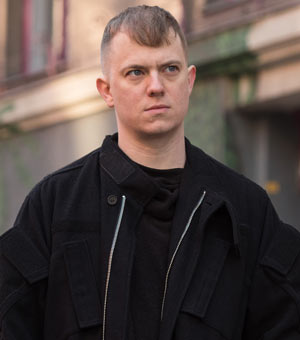While we’re on the subject of aliens…
by Travis Jeppesen on May 1, 2008
I wrote this review for Think Again magazine; I thought I’d include it here because I picked up the book at the Martian Museum of Terrestrial Art show at the Barbican when I was in London. It was actually the only book on ufology that they were selling at the Barbican, which leads me to believe that it likely represents the curators’ sole effort at digging into the subject, which is rather unfortunate….
UFO Religion by Gregory L. Reece
Ufology is a boundless field that, in many ways, is not a field. Its practitioners come from a wide array of backgrounds, and include amateurs, esoteric fanatics, alleged contactees, and academics, many of whom claim to possess some vital nugget of truth related to those lights and phallic discs that occasionally appear in the night skies, only to vanish into the very blackness from which they materialized.
Given the highly speculative nature of the field, ufology differs from other subjects of study in that just about anyone who wants to can declare himself or herself an expert. This has given birth to a vast body of literature, some of which is quite profound and wide-ranging in its implications, while a lot more is quite simply bunk. In recent years, Brenda Denzler’s The Lure of the Edge: Scientific Passions, Religious Beliefs, and the Pursuit of UFOs, a masterful sociological history of the ufological movement that carefully and intricately probes that undefined area situated at the intersection of science and religion, fits into the first category. I expected something similar from Gregory L. Reece’s recent book, UFO Religion, and was let down.
Subtitled “Inside Flying Saucer Cults and Culture,” UFO Religion crudely summarizes the major sighting incidents, contactee movements, and popular theories regarding the origins of UFOs. A cynical skeptic, Reece offers no new theories of his own – nor is he likely qualified to. He is identified in his bio only as “an independent writer and scholar based in Montevallo, Alabama,” wherever the hell that is, and is unaffiliated with any university. His writing is devoid of any persuasive arguments or compelling tidbits of information; rather than employing impassioned debate against the saucer phenomenon rooted in some subtle form of scientific, sociological, and/or psychological analysis, Reece relies on lazy cynicism and jokes that aren’t funny. While the book is chock full of citations and comes equipped with a modest bibliographical compendium, the book reads like a 200 page long Wikipedia entry. One suspects that this is where Reece conducted most of his research.
Far from taking us “inside” the culture and quasi-religious tendencies of ufology, UFO Religion repeats what anyone with a vague understanding of the feral subject already knows. Anyone who’s new to the field would be better off starting with the sources and forming their own conclusion, rather than wasting time on this misleading excuse of a study, which is as lacking in insight as it is in seriousness and integrity.
The Institute of Psychoplasmics
by Travis Jeppesen on April 18, 2008
I’m proud to be a part of the Institute of Psychoplasmics, a group exhibition currently on (through May 26, 2008) at the Pump House Gallery in London’s Battersea Park.
The Institute of Psychoplasmics, curated by the Pil and Galia Kollectiv, is an exhibition about cultic social groupings and how they challenge the integrity of the social body by producing another within it. It takes its name from the eponymous fictional institute in David Cronenberg’s film The Brood, in which rage is encouraged to take the form of a cancerous schism within the body. Recreated within the Pump House gallery, the institute will investigate cults, brainwashing, war games, rituals and other explorations of the body politic as a metaphor for the social body, through videos, paintings, sculptures, sound and object-based installations, live work, a discussion panel and a publication.
My contribution to the exhibition is a short story, “What the Witch Doctor Says,” which appears in the exhibition catalog.
My Life in Meat: Death as Art, Art as Death
by Travis Jeppesen on April 16, 2008
This essay was originally published in Czech translation in 2005. It appears here in the original English version for the first time. It is part of the forthcoming collection, Disorientations: Art on the Margins of the “Contemporary” (Social Disease, 2008).
I’m writing this in the United States of America, which, in case you didn’t know, is the fattest nation on Earth. Glancing at all the lard asses surrounding me, I sometimes wonder how I got let off the hook. I mean, I was a normal American kid by most standards. I grew up in the south, where the local cuisine dictates that everything including vegetables must be fried in animal fat, ate at McDonald’s several times a week, never exercised, often skipped out on gym class to smoke cigarettes and dope. Yet I was always a lightweight.
For a while I even stayed away from meat. I became a vegetarian, mostly to piss off my parents. It didn’t last long. Resisting the cunning allure of dead animals proved to be a futile effort, and I soon found myself eating them once again on a more or less regular basis.
Then one day, I became obsessed with serial killers. Of course I’d always known that monsters depicted in slasher films like Friday the 13th and Psycho existed in real life. What I learned in my research, though, is that a killer’s mania often stems from a lifelong fascination with dead things.
At a party, I was once fortunate enough to meet a sociologist whose research focused extensively on serial killers. We ended up talking at length about the psychopathology of every day life, and although we were freebasing cocaine at the time, her answers nevertheless shone some interesting light on the subject. For instance, the myth of pornography. Shortly before Ted Bundy was executed, he made some statement along the lines of “pornography is what made me savagely rape and butcher to death dozens of girls.” Of course pornography doesn’t cause psychopathic behavior; in fact, according to my crack-smoking sociologist friend, the common thread that links most of history’s more brutal serial killers isn’t porn, but horror films. Necrophiliac killer Jeffrey Dahmer, for example, used to watch The Exorcist 2 compulsively. In real life, Dahmer fetishized death in the same way that he saw it fetishized on screen. In the uncanny way that art and life feed off one another, Dahmer became an artist – a meat artist – keeping body parts of his victims around the house to play with and eat, with the ultimate goal of building a sort of shrine made out of his victims’ body parts – a shrine that he felt would heal him. Unfortunately, he was arrested before he had a chance to complete this masterpiece.
Ed Gein, a figure whose life was later used as a model for numerous horror films including Texas Chainsaw Massacre, took things even further. When police arrived at his Wisconsin farmhouse in the late ‘50s, they found a vast collection of meat art. In the woodshed of the farm was the naked, headless body of Bernice Worden, hanging upside down from a meat hook and slit open down the front. Her head and intestines were discovered in a box, her heart on a plate in the dining room. The skins from ten human heads were found preserved, and another skin taken from the upper torso of a woman was rolled up on the floor. There was a belt fashioned from carved-off nipples, a chair upholstered in human skin, the crown of a skull used as a soup-bowl, lampshades covered in flesh pulled taut, a table propped up by a human shinbones, and a refrigerator full of organs. The four posts on Gein’s bed were topped with skulls and a human head hung on the wall alongside nine death-masks – the skinned faces of women – and decorative bracelets made out of human skin. The stunned searchers also uncovered soup bowls fashioned from skulls, a shoebox full of female genitalia, faces stuffed with newspapers and mounted like hunting trophies on the walls, and a “mammary vest” flayed from the torso of a woman. Gein later confessed that he enjoyed dressing himself in this and other human-skin garments and pretending he was his own mother.
Then there are the numerous performance artists who have used meat – that is, the flesh of dead animals – in their actions. The most notable contributions to meat art were made in the 1960s by the Vienna Actionists (Rudolf Schwarzkogler, Hermann Nitsch, Otto Muehl, and Gunter Brus). Their actions, which rifled the feathers of the stiff Austrian public and resulted in jail time for many of the participants, often included the ritualistic slaughter of animals, whose innards were then smeared over the performers’ bodies, which were in turn treated like meat via self-mutilation.
In the late 1980s and early 1990s, a whole new generation of musicians who had been weaned on slasher flicks began forming metal bands, making a lot of terrible noise while belching out lyrics using grotesque medical terminology to describe impossibly fatal and disgusting bodily quandaries. Grindcore was born, and in the center of it all was a band called Carcass, with song titles like “Swarming Vulgar Mass of Infected Virulency” and “Cadaveric Incubator of Endoparasites.” While Carcass isn’t around anymore, this initial strain of grindcore still exists today in the form of gore metal, represented by bands like Haemorrhage and Exhumed.
For the first time in history, the last century’s carnivorous artwork has assigned a new pertinence to dead flesh – namely, meat as muse and matter. These artists have made the ultimate Cartesian split, refusing to deify the human body by viewing it as merely another material in the penultimate vision guiding their creations. In an aesthetic universe, vision alone takes precedence over everything else, transcending all the conflicts and traumas imposed on the psyche by the meat we carry around inside us – the very meat that unites us with nature and guides us in our efforts to destroy this nature as loudly as possible. For it is in those desultory orgiastic explosions of violence – the ultimate desecration of the sacred body – that truth subsides on this lowly earthly plane.
Pause/Gio + Superm in Norway
by Travis Jeppesen on April 16, 2008
I’ll be back later this week, I promise. Things are a bit hectic right now, as I’ve been working on final edits for Disorientations (the book) ever since I got back from London, plus a deadline for ZOO Magazine. The new subtitle for Disorientations, by the way, is Art on the Margins of the Contemporary.
I hope to write about the shows I saw in London, including No Bra, Derek Jarman, and the Martian Museum of Terrestrial Art, later in the week.
If you happen to be in Norway, meanwhile, check out this exhibition from SUPERM (Slava Mogutin + Brian Kenny) and Gio Black Peter. I interviewed Gio for the latest issue of ZOO, which is due out in May.
Galleri s.e is proud to present SPUTNIK 3, a collaborative show by the New York-based art collective SUPERM (Slava Mogutin & Brian Kenny) and Guatemalan-born artist and musician Gio Black Peter.
SPUTNIK 3 is the name that SUPERM and Black Peter have been using for their collaborative work since 2006. They use all available media and source materials, ranging from reclaimed furniture and street art to personal fetish gear, hair and bodily fluids.
Opening on April 12th, the Soviet Space Day and coincidentally Slava Mogutin’s birthday, SPUTNIK 3 is a site-specific installation combining large-scale paintings on canvases and plywood, drawings, sculptures, photos, videos, and a permanent bathroom installation. The show features a new series of drawings by Gio Black Peter on New York City subway maps and SUPERM drawings on vintage American shooting targets made in collaboration with an international group of artists including Bruce LaBruce, Christophe Chemin, Sebastiano Mauri, Lee Adams, Christophe Hamadie-Pierson, Josh Lee, and Marko Brozic.
Personal, political and transgressive, SPUTNIK 3 artwork reflects artists’ diverse backgrounds and aesthetics. It’s a direct response to a world of shameless war propaganda, media brainwashing, corporate censorship, state-induced paranoia, and shrinking personal freedoms.
Slava Mogutin (1974, Kemerovo, Siberia). He moved to Moscow at the age 14 and soon began working as a journalist for the first Russian independent newspapers and radio stations. At the age of 21, Mogutin was exiled from Russia for his queer writings and activism. He was granted political asylum in the US with the support of Amnesty International and PEN American Center. He is the author of seven books in Russian and two hardcover monographs of photography, Lost Boys and NYC Go-Go (powerHouse Books, 2006 and 2008). Mogutin’s artwork has been exhibited internationally and featured in a wide range of publications including The New York Times, The Village Voice, i-D, Visionaire, L’Uomo Vogue, and Stern.
http://slavamogutin.blogspot.com
Brian Kenny (1982, Heidelberg, Germany). While growing up, Kenny traveled extensively throughout the US with his Army family. As a teenager, he was a competitive gymnast. After high school, he went to Oberlin Conservatory to pursue a degree in voice, but eventually left school to produce his own music, which combines elements of hip hop and ambient. Kenny works across drawing, graffiti, text, sound and video. In 2004, he moved to New York where he began collaborating with Slava Mogutin under the team name SUPERM. They are responsible for site-specific, multimedia gallery and museum shows in New York, Los Angeles, Berlin, London, Moscow, Oslo, and León, Spain.
http://briankenny.blogspot.com
Gio Black Peter (born Giovanni Paolo Andrade Guevara, 1979, Guatemala City). At the age of 5, Gio illegally emigrated with his family to the United States and moved to New York City. In 2005, he formed his music band Black Peter Group. He has exhibited his artwork and performed in New York, London, Paris, Berlin, Antwerp, and Turin. He’s the star of James Bolton’s independent feature Eban and Charley (2000) and the new Bruce LaBruce movie, Otto, or Up with Dead People! Black Peter’s artwork, videos and music incorporate his experiences living as an outsider in the United States. His first album “It’s Fucked Up” is scheduled for release in 2008. He divides his time between New York, London, and Paris.
http://gioblackpeter.blogspot.com
http://www.youtube.com/user/blackpetergroup
g a l l e r i s . e
Kalfarveien 76, N-5018 Bergen, Norway
+47 55 31 57 55 (Office)
+47 958 53 680 (Mobile)
HANES
by Travis Jeppesen on April 11, 2008
HANES, the film that Mark Ther made about my move from Prague to Berlin, can now be viewed in full online.
Mark Ther
In the Cold
by Travis Jeppesen on April 9, 2008
True North
Deutsche Guggenheim, Berlin
Through April 13th, 2008
Ameland-Pier X by Elger Esser (C-Print, 2000): When you stand away from it, it looks like a white painting with a series of thin black lines bisecting it horizontally. When you move closer, you realize it is a photograph of the horizon itself, the lines being the remains of a pier jutting out into the icy nothingness.
Palindrome by Orit Raff (Video, 2001): This video riffs on Joseph Beuys’s I Like America and America Likes Me. A woman inside an igloo applies slabs of brown felt to the ground, while outside, a coyote hovers near the entrance. Near the end, a second coyote appears. The woman inside the igloo, meanwhile, continues her performance, stacking the slabs of felt on top of one another.
Glaspass by Thomas Fletchner (C-print, 2001): The artist goes on walks in cold cold places. He traces the topography of various snowfields with his skies, then uses long exposures to “freeze” the imprints. The most beautiful image in the show, one can readily lose oneself in the swirling lines on this snow-capped hill, which varies only slightly in color from the sky crowning it.
Ski Dome, Tokyo, Japan by Armin Linke (C-print, 1998): Like Esser’s, a painterly photo. The white of the slope and blue of the ceiling, the rainbow-colored lights, everything, all the lights and colors, down to the red and yellow suits of the people on the indoor slope, it all comes together to form an image that is simultaneously composed and open. A chaos that coheres.
Glaciers by Olafur Eliasson (photos, 1999): Pictures of glaciers. Probably the only boring thing I’ve ever seen Eliasson do.
Pi by Roni Horn (photos, 1997-1998): Arranged around a circle in a room. It is the Arctic circle. An old couple living in Iceland and their life together there. They watch a soap opera, Guiding Light. The light guides them through the day. A profound disconnection with reality, the movements until darkness. Nature does its thing, another episode, we are back to where we began.
Nut-ka- by Stan Douglas (video, 1996): The story of the colonization of Vancouver Island in Canada told through a barrage of literary texts read simultaneously, the camera molests the landscape.
So far far north. A land where there are no squirrels. You have to eat the ice in order to survive. Even when there are people, they are never far enough away from you.
Biennale Blasé
by Travis Jeppesen on April 5, 2008
The problem with this Berlin Biennial – and every one I’ve seen so far, to be honest – is the fact that the curators can somehow never resist falling into the pitfalls of an unhealthy preoccupation with the city itself. As though we need to be told time and again the harsh lessons that history has taught us all in Berlin, that there are ghosts on every street corner, that we still have not come to terms with the past, ad nauseam. (Imagine if the Venice Biennale were organized around the theme of “mercantilism” year after year. People would revolt!)
To compare Berlin to another low budget biennale in the region – the most recent installment of the Prague Biennale – the differences in quality are glaring. The Prague Biennale curators made an effort to engage in the local, as well – but their curatorial efforts were not geared so much to the city of Prague as towards the artists living and working there. I’m not sure how many of the artists featured in this year’s Berlin Biennale are actually from Berlin, but it seems that those who are were selected from among the least interesting.
By the curators’ own admission, they decided to go about as though they were simply organizing a large-scale group show, rather than a biennale. Whether this was done out of a willful arrogance masquerading as disregard for convention, or intimidation in front of the daunting biennale concept (and perhaps it was a little of both), the curators have put together a slapdash production that doesn’t bother to cohere on any level. Not as an index of current trends, a showcase of the best and brightest, nor even the most provocative tempered with disruptions of stillness and subtlety. Everything is so blasé, but not blasé in an academic sense – blasé as in uninspired.
The “night and day” theme is inspired only insofar as the night program seems a lot more thrilling than what’s on offer during the day – as even the title of the exhibition, Mes Nuits sont plus belles que vos jours, plainly admits. I can’t speak for anyone else, but I have to say that my nights never come at the expense of my days; rather, the two are interdependent. This is a delicate balance that this year’s Berlin Biennial fails to attain.
London April 5-6
by Travis Jeppesen on April 4, 2008
I’ll be doing two readings in London this weekend.
Saturday, April 5, I’ll be reading with Adelle Stripe of the BRUTALISTS at Foyles Bookshop at 4pm. It’s part of some short story festival. I’ll be reading my story “What the Witch Doctor Says” from the Institute of Psychoplasmics exhibition catalog (the exhibition itself opens April 8 at the Pump House Gallery in Battersea Park.)
Then, on Sunday April 6 at 2:30pm, I’ll be reading at a Literary High Tea Event at The Fitzroy Dolls Restaurant, Hotel Russell,
1-8 Russell Square, Bloomsbury, London WC1B 5BE (nearest tubes: Russell Square, Holborn)
Entrance: Readings and burlesque performer come free with your Afternoon Tea (£17.50)
PRE-BOOKING REQUIRED
To book your seats, go to: www.apisbooks.com/news/
Come to one or both of these readings, say hi — I don’t bite.
5th Berlin Biennial for Contemporary Art: 1st Impressions
by Travis Jeppesen on April 3, 2008
Today was the first day of the press preview for the latest installment of the Berlin Biennial, curated by Adam Szymczyk and Elena Filipovic. I generally make it a rule to see a show at least twice before I review it, but first impressions can also be good a gauge of things, so before I start going into the high points and low points, I just thought I’d hazard the warning that I’m planning on going back a few more times, so the opinions offered below may change over time.
As far as I understand it, the curators’ concept is to divide the exhibition into two segments – a day program and a night program. The former – situated at KunstWerke, the Neue Nationalgalerie, the Schinkel Pavilion, and Skulpturenpark Berlin_Zentrum – features more or less a static exhibition of works (with the exception of the Schinkel Pavilion, which will be the site of revolving exhibitions curated by selected artists), while the night program will consist of a schedule of lectures, readings, screenings, and performances. Based on what I saw today, I have to say that I’m looking forward to the night program – it seems that this is where the real curatorial energy has been invested.
If pressed to sum up my impression of the work in the KunstWerke and the Neue Nationalgalerie: shabby. Albeit, it’s a very Berlin type of shab that would easily be at home in many of Mitte’s fashion boutiques. There are no well-known artists at all in the exhibition; much of the work looks very studenty. Heavy on the installation side, with hardly any painting, and quite a few videos thrown in for good measure.
One of the few pieces that really stand out is a video by Zhao Liang, City Scene. The artist wanders through Beijing at night with a video camera in hand, filming whatever natural “scenes” he happens to stumble upon – fist fights outside of bars, shady incidents with men forcing women into cars, a punk rock club…. At 23 minutes, the video is powerful, disturbing, and poetic – it could have gone on for much longer. You can’t say that about much video art these days.
To be continued…









